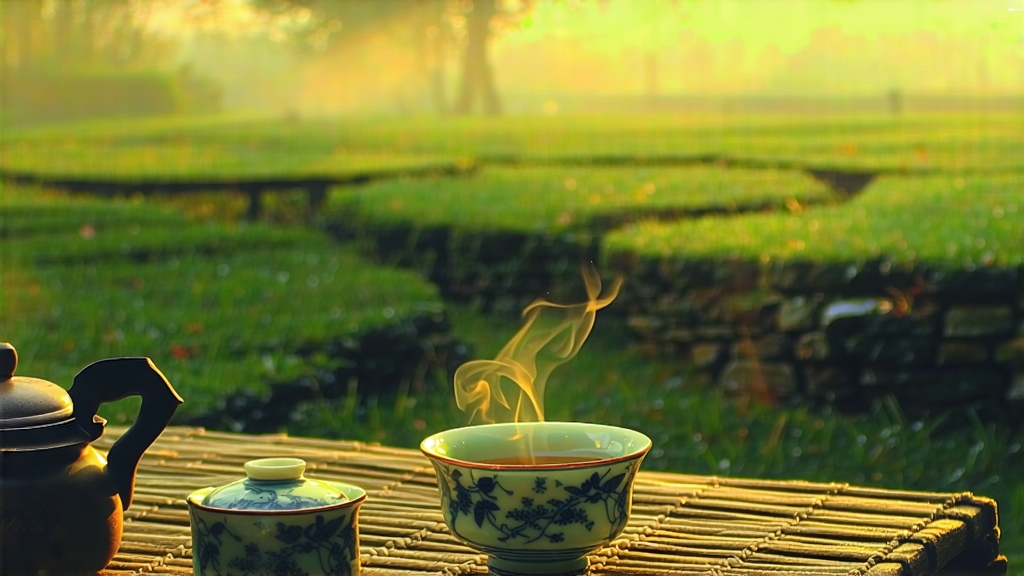
Alishan High-Mountain Oolong, known in Taiwan as “阿里山高山茶,” is the island’s most celebrated gift to the world of oolong. Grown between 1,000 and 1,400 metres on the forested spine of the Alishan range, this tea absorbs 2,500 mm of misty rainfall a year, ultraviolet-rich sunlight filtered through bamboo and cedar, and nightly clouds that act like a natural air-conditioner. The result is a leaf that is physiologically thicker, chemically more aromatic, and spiritually closer to the sky than almost any other Camellia sinensis cultivar.
History
Although Chinese immigrants brought tea bushes to Taiwan in the late 18th century, Alishan itself remained a Tsou aboriginal stronghold until the early 20th century. Japanese agronomists, eager to compete with Assam and Ceylon, mapped the mountain’s climate in 1906 and quietly planted a few Qingxin (Green Heart) bushes on experimental plots. After retrocession in 1945, Kuomintang veterans expanded these gardens, but the real boom arrived in 1980 when freeway No. 3 opened the mountain to weekend tourists. Within a decade, Alishan oolong had eclipsed Dong Ding in auction price, and by 2000 it was the benchmark against which all Taiwanese high-mountain teas were judged.
Cultivars
Over 90 % of Alishan gardens are planted with Qingxin (Chin-hsin) oolong, a slow-growing, low-yield bush that sacrifices volume for fragrance. A minority garden masters plant Jinxuan (TTES #12) for its natural milk note, or Sijichun (Four-Season Spring) for year-round harvests, but purists insist that only Qingxin expresses the full “high-mountain qi.” Each cultivar is grafted onto seedling rootstock to resist phytophthora, then spaced two metres apart so that morning fog can circulate and deter leafhoppers.
Terroir
Alishan is not a single peak but a 20-km ridge of ancient laterite covered with volcanic loam. Day-night temperature differentials often exceed 15 °C, forcing the plant to convert stored starches into aromatic amino acids such as L-theanine and glutamic acid. Ultraviolet intensity at 1,200 m increases catechin condensation, yielding a liquor that is simultaneously sweet, astringent and transparently floral. Finally, the mountain’s perennial cloud cover slows photosynthesis, thickening the mesophyll and creating the signature “milky” mouthfeel that lingers like dew on orchid petals.
Plucking Standard
The annual cycle begins when overnight lows stabilise above 10 °C, usually late March. Pickers climb the terraces before dawn, wearing LED headlamps to select the “small open leaf” standard: the apical bud plus the next three leaves, still tender enough to fold without snapping. Only 30 kg of fresh leaf can fit into a bamboo creel, and it takes five hours to fill one—by which time the sun has risen high enough to end the harvest. Any leaf plucked after 10 a.m. is rejected, because rising sap sugars would skew the later withering phase.
Withering
Back at the farmhouse, leaves are spread on bamboo trays set at 45° angles beneath infrared heaters that mimic the gentle warmth of a spring sunrise. For the first 90 minutes the leaf is left untouched, allowing cellular water to migrate outward. Then comes the “yin-yang” turn: every 15 minutes the tea master flips the trays to expose the shaded underside, creating an alternating rhythm of oxidation and dehydration. Moisture drops from 78 % to 68 %, while grassy hexenals volatilise and floral terpenes concentrate.
Shaking (Zuo Qing)
The soul of oolong lives in the shaking room. Armfuls of wilted leaf are tumbled into a waist-high bamboo drum rotating at 18 rpm. For Alishan, the cycle is gentler than for rock oolongs—only four turns of three minutes each—yet the kinetic bruising is enough to rupture 30 % of cell walls. Polyphenol oxidase meets catechins, initiating the partial oxidation that will freeze the tea between green and black. Between rotations the leaf rests on rattan mats, exhaling apple-sweet esters that mingle with incense from the household altar.
Fixation (Sha Qing)
When the leaf edge turns russet and the centre remains jade, the master judges oxidation to be